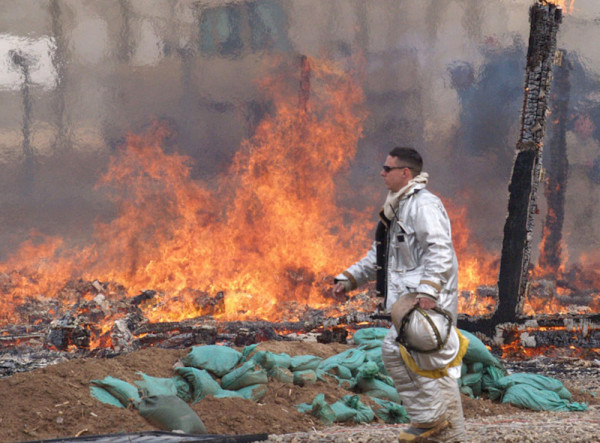

Since operations began in the Middle East in 2001, the U.S. military has used hundreds open-air pits to burn solid refuse, often exposing soldiers and locals to toxic fumes.
With mounting health concerns, the Defense Department set limits on the usage of these burn pits in 2009. However, in 2010, the Government Accountability Office found that the department had violated its own protocol for safe burn pit practices, noting that some pits had been used to burn anything from toxin-emitting batteries to plastics.
Still, when U.S. troops returned to Iraq in 2014, burn pits made a resurgence, Stars and Stripes reported.
On Jan. 21, a federal court in Greenbelt, Maryland, will examine a lawsuit regarding allegations that exposure to burn pits in Iraq and Afghanistan caused serious if not deadly respiratory illness among troops.
The case — filed in 2010 — will be considered by the court, which will hear arguments to determine its scope. It may include more than 53 former and current bases in Iraq.
This case is one of many where veterans groups are attempting to discern the nature of burn-pit exposure and its effects on service members.
Still, despite numerous lawsuits, the Defense Department removed burn pit exposure from its Congress-mandated 2016 list of peer-reviewed medical research programs. It was only added to the list in 2015, and a spokesman confirmed that research had not yet begun.
Ron Brown, president of the National Gulf War Research Center, speculated, “What they may have done … instead of listing it as ‘burn pit exposure,’ is broken it down in subcategories dealing with specific illnesses,” according to Military.com.
Brown, however, has no idea why the Defense Department would do that considering the scope of burn-pit exposure also covers other ailments that affect veterans of the Persian Gulf War, Iraq War, and Afghanistan War.
